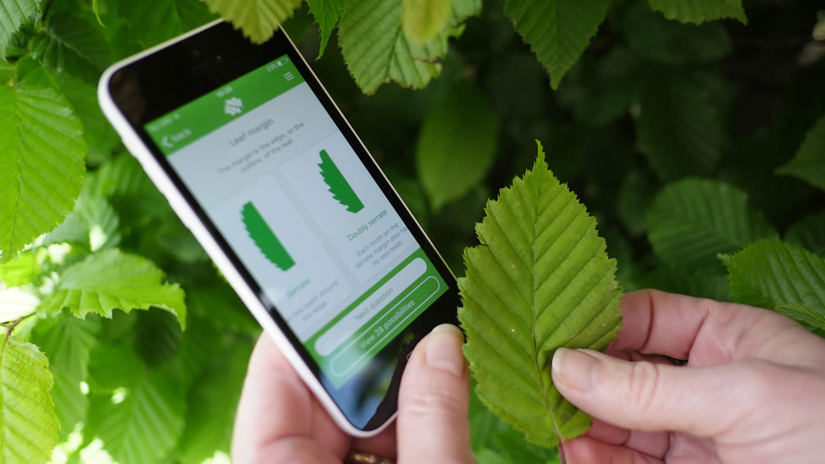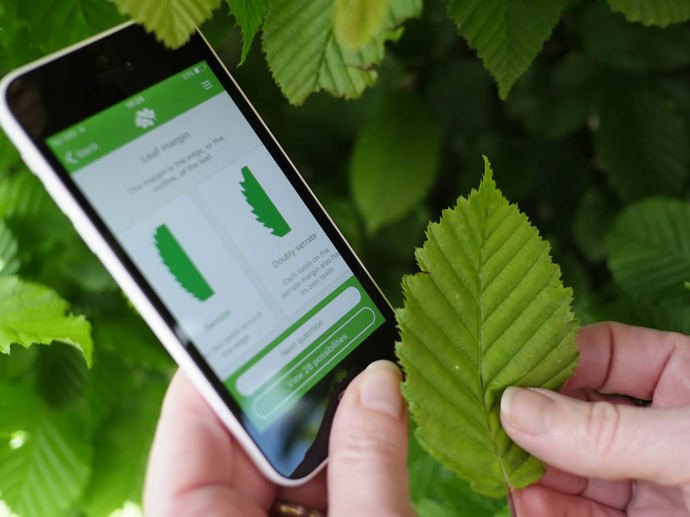Common name: London plane
Scientific name: Platanus x hispanica
Family: Platanaceae
Origin: non-native
A real city slicker, the London plane is the capital’s most common tree. As a hybrid of American sycamore and Oriental plane, it was first discovered in the 17th century then widely planted in the 18th.
Common name: London plane
Scientific name: Platanus x hispanica
Family: Platanaceae
Origin: non-native
The London plane can grow to 35m and live for several hundred years. The bark is olive green to grey, with large scaly plates that peel off to reveal a creamy bark beneath. Young twigs are green-brown.
Look out for: the multi-coloured bark which has a camouflage-style pattern.
Identified in winter by: the catkins which are spherical and hang down from the tree on long stems. The leaf buds are round and have two to three scales with a leaf scar almost surrounding the bud.

Credit: Nature Photographers Ltd / WTML
Sycamore-like leaves are leathery and thick, with five triangular lobes. They turn a rich orange-yellow before falling in autumn.

Credit: Jacek Wojnarowski / shutterstock.com
London plane is monoecious, meaning the ball-shaped male and female flowers are found on the same tree, although on different stems.

Credit: FLPA / Alamy Stock Photo
After pollination by wind, female flowers develop into spiky fruits, comprising a dense cluster of seeds with stiff hairs, which aid dispersal by wind. The fruits slowly break up over winter to release their seeds.
Sycamore (Acer pseudoplatanus), though the edges of London plane leaves are not serrated.


Download our free Tree ID app for Android and iPhone to identify the UK's native and non-native trees. It's an A-Z tree guide in your pocket.
The bark breaks away in large flakes to dispel pollutants, hence the tree’s ability to cope with high levels of air pollution and the reason for the trunk’s distinctive camouflage pattern.
The London plane is thought to be a cross between the Oriental plane and the American sycamore – both of which had been introduced to Britain. By chance, one of each species had been planted in the London nursery garden of John Tradescant, the younger which cross-pollinated to produce a new hybrid. It was first noticed by Tradescant – a famous botanist – in the mid-17th century and named after the city where it originated.
Planting of the new hybrid across London started in the late 18th century and nowadays it is a common tree in London, both as a street tree and in city parks.
According to the London Tree Report, the London plane tree is one of the most 'important species' in Inner London (but not Greater London) along with birch (Betula
spp), lime (Tilia spp.) and apple (Malus spp.). The report also notes that London plane trees make up the largest leaf area of all tree species in Inner London, potentially bringing the most benefits for air quality and shade.

Credit: Wahavi / shutterstock.com
While very little wildlife is associated with London plane, its seeds may be eaten by grey squirrels and birds have been known to nest in the tree.
London plane is valued for its ability to adapt to urban conditions and its resistance to pollution, and is therefore widely planted as a street tree in large cities, particularly London. The wood used to be popular for making veneers, as it is an attractive golden-brown colour with dark brown flecks.

London plane may be susceptible to plane anthracnose, which causes dieback in leaves and shoots. It can also be affected by plane wilt.